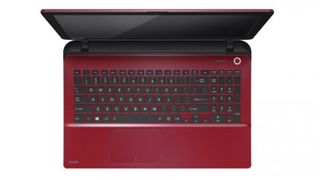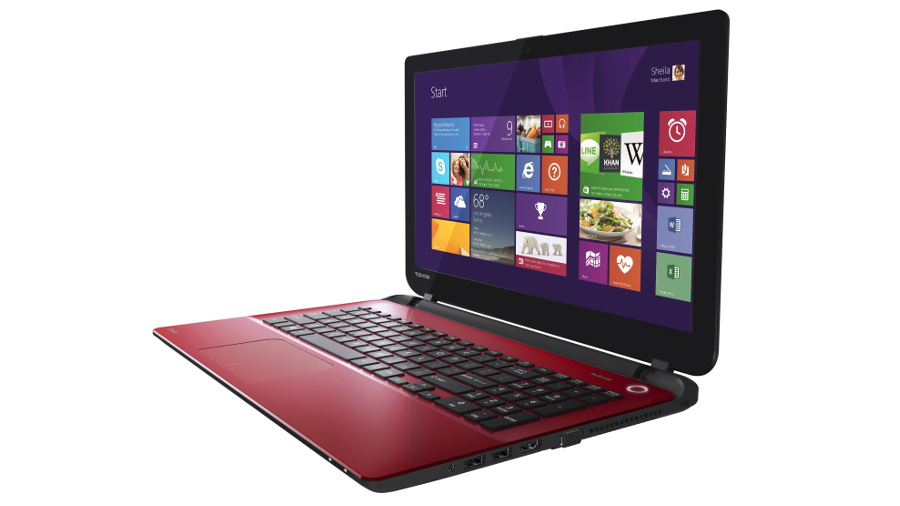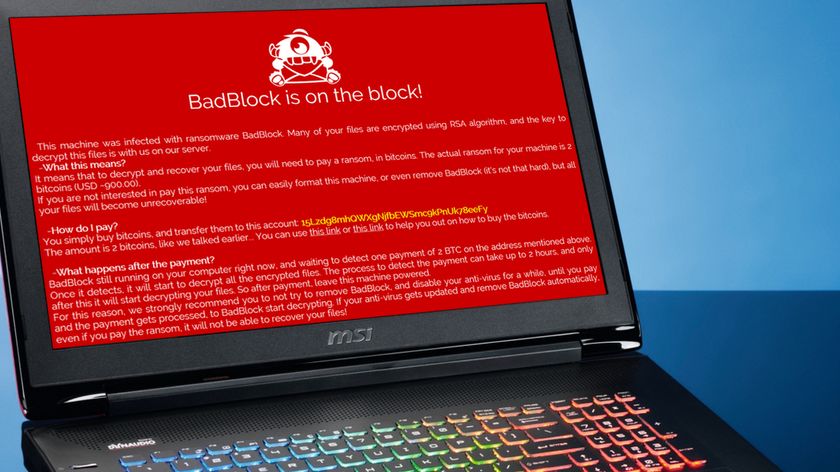TechRadar Verdict
A good looking laptop that's let down by mediocre components and a sub-standard screen.
Pros
- +
Smart eye-catching design
- +
Slimmer and lighter than rivals
- +
Reasonable Core i5 processor
Cons
- -
The competition is quicker
- -
Disappointing keyboard
- -
Poor screen quality and resolution
Why you can trust TechRadar
Few companies are as experienced or prolific as Toshiba when it comes to mid-range laptops, and its Satellite L50-B-1DV ticks most of the right boxes. It's got a Core i5 processor, plenty of memory and a 15.6in screen, and it costs a reasonable £500.
Toshiba has factored some keen design into the budget, too – the lid is covered with glossy red plastic that bears a smart lined pattern, and the interior is brightened up by the same colourful material.
Good looks
The L50 looks better than its rivals. Toshiba's own Satellite S50D-A-10G was saddled with dull, metal-effect plastic throughout, and the Lenovo Flex 2 15 didn't stand out because of its subtle brushed effect.
Toshiba's latest is more portable than the competition, too. Its 4.85lb (2.2kg) weight undercuts the 5.24lb (2.38kg) S50D and the 5.51lb (2.5kg) Lenovo, and the red-tinged Toshiba is 0.94in (24mm) thick – the same as the S50D, and a little thinner than the Flex.
There's one area where the L50 is only level pegging with its competitors, though, and that's build quality. There's only a little flex in the wrist-rest, which is good for this level of system, but the rest of the Toshiba isn't as sturdy – the underside is easy to depress, and the screen is unusually flexible, with too much wiggle-room across the whole panel and a dose of desktop distortion when we pressed the rear. It may not weigh much, but we wouldn't leave the house unless the L50 was coddled inside a sleeve or case.

Typing troubles
The reasonable strength on the wrist-rest carries over to the keyboard, which has a sturdy base. The layout is decent, with a numberpad, and sizeable Return and spacebar keys. It's not all good news, however: the keys suffer from a drastic lack of travel, which means that typing feels distant and unsatisfying. The lack of responsiveness from the typing gear means that the L50's keyboard is only good enough for emails, IM and web browsing, rather than serious work.
The trackpad suffers similarly. The surface is large and reasonably responsive, but the two buttons incorporated into the red plastic weren't light or responsive enough for us – they required too much pressure to click.
A standard selection of ports are scattered around the Toshiba's edges. Two USB 3.0 connections are joined by a slower USB 2.0 port, and display outputs are handled by HDMI and D-SUB. There's a card reader, but only one audio jack.

Specs appeal
On the inside, the Toshiba is dominated by an Intel Core i5-4200U. It's got two cores and is clocked to 1.6GHz, which is 100MHz slower than the i5-4210U inside the Lenovo system. It doesn't sound able to keep up with the other Toshiba, either, which has an AMD A10-5745M APU that runs at 2.1GHz.
Elsewhere, Toshiba deploys 8GB of RAM and a 1TB hard disk. That's 2GB more memory and double the amount of storage space as the Lenovo, and exactly the same amounts that are offered inside the AMD-powered Toshiba. There's little to shout about in terms of connectivity: dual-band 802.11ac Wi-Fi, Bluetooth 4.0 and Gigabit Ethernet is now a conventional selection.
Mike has worked as a technology journalist for more than a decade and has written for most of the UK’s big technology titles alongside numerous global outlets. He loves PCs, laptops and any new hardware, and covers everything from the latest business trends to high-end gaming gear.
Most Popular






